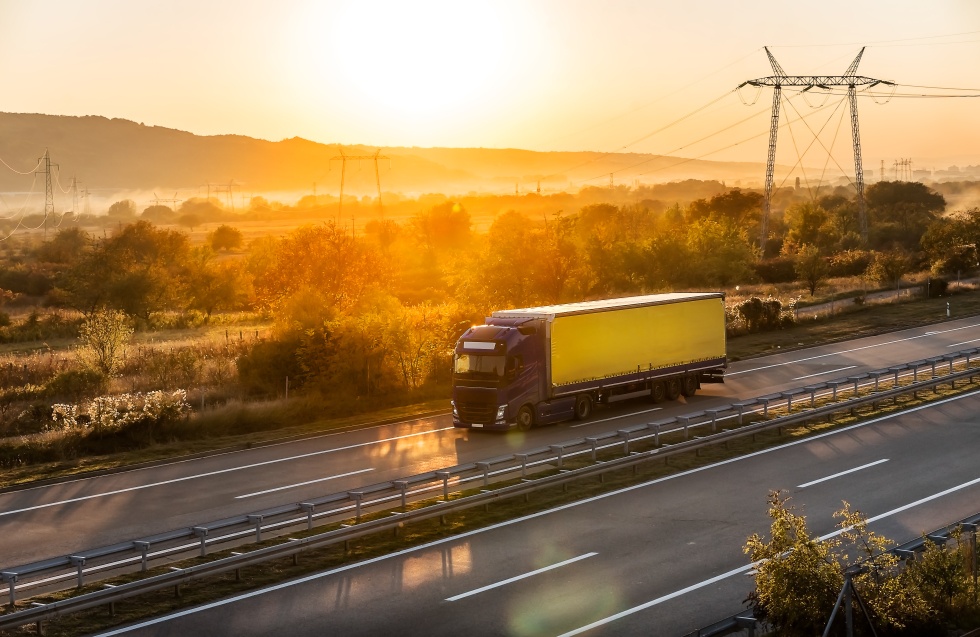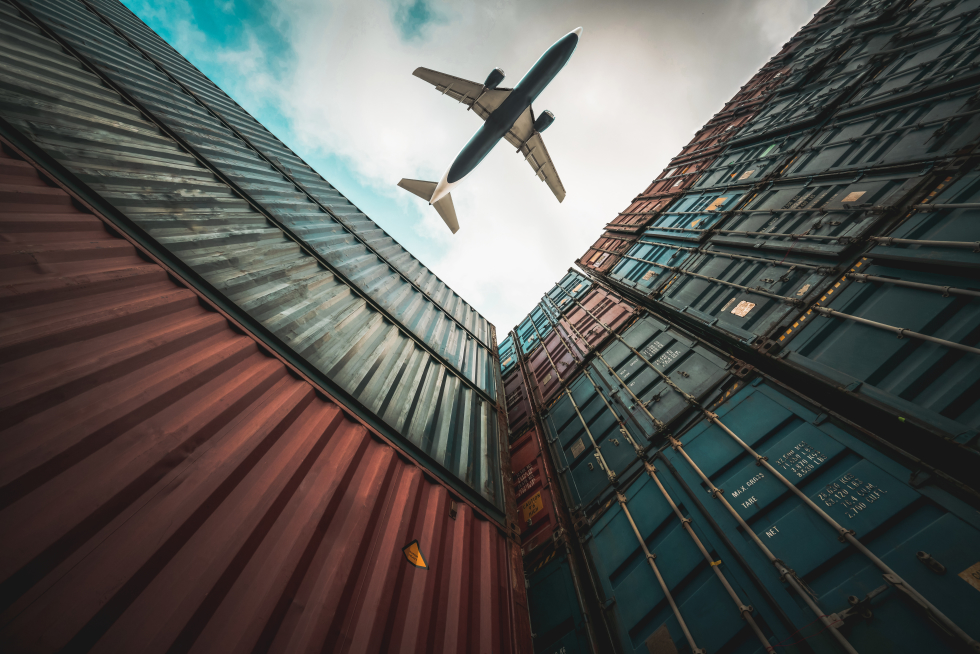Green Logistics & Computing Excellence in Global Trade
Explore the synergy of green logistics and computing in global trade. Elevate your business with sustainable practices. Dive into eco-friendly commerce now!

TIn the dynamic landscape of international business, a paradigm shift towards sustainability has become a defining feature. Companies engaged in global trade are increasingly recognizing the imperative of adopting environmentally friendly practices across multiple sectors. This comprehensive guide explores the multifaceted aspects of sustainability, offering insights into sustainable packaging, fishing, agriculture, and green computing, all of which contribute to a more responsible and environmentally conscious global business environment.
Sustainable Practices in Green Logistics
Sustainability is no longer a buzzword; it's a strategic imperative for businesses worldwide. In the realm of international trade, the adoption of sustainable practices is reshaping traditional norms. The green logistics revolution isn't just a moral obligation; it's a smart business move. When companies integrate sustainability into their core values, they reap many benefits, from cost savings to enhanced brand reputation.
Sustainable Packaging
Sustainable packaging is more than an environmental gesture; it's a transformative approach that minimizes environmental impact. From bio-based materials to recyclable designs, the evolution of sustainable packaging is revolutionizing the import-export sector. Embracing these innovations not only aligns with global sustainability goals but also appeals to the conscientious consumer.
Bio-based Materials
Traditional packaging materials often rely on fossil fuels, contributing to environmental degradation. Bio-based materials offer a revolutionary alternative by deriving packaging from renewable resources such as corn starch, sugar cane, or algae. These materials are not only biodegradable but also reduce dependence on non-renewable resources.
Eco-friendly Designs
Sustainable packaging goes beyond the choice of materials; it encompasses the entire design process. Companies are increasingly adopting minimalist designs that optimize material usage and ensure that packaging serves its purpose without unnecessary waste. Smart design strategies aim to balance functionality, aesthetics, and sustainability.
Recyclable and Compostable Packaging
One of the most significant shifts in sustainable packaging has been the widespread adoption of materials that can be easily recycled or composted. Packaging made from paper, paperboard, or certain bioplastics allows consumers to dispose of the packaging responsibly, reducing the burden on landfills. Compostable packaging, in particular, turns into nutrient-rich soil through natural decomposition.
Reusable Packaging Solutions
The concept of a circular economy is gaining momentum, and reusable packaging is a central element. Companies are designing packaging that can be easily returned, cleaned, and reused. This approach not only minimizes waste but also encourages a shift away from a disposable mindset and promotes sustainability through extended product lifecycles.
Edible Packaging
Pushing the boundaries of innovation, some companies are exploring edible packaging solutions. Often made from natural ingredients such as seaweed or starch, these packages are not only biodegradable but can also be consumed with the product. Edible packaging aims to eliminate waste, offering a unique and sustainable approach to packaging.
Smart Packaging Technology
Incorporating technology into sustainable packaging is a game changer. Smart packaging includes features such as QR codes for recycling information, freshness indicators, and temperature-sensitive labels. These technologies empower consumers to make informed choices and help reduce food waste by ensuring optimal product storage conditions.
Mushroom Packaging
Mycelium-based packaging is a rising star in sustainable packaging derived from mushroom roots. It serves as an eco-friendly alternative to traditional packaging materials such as Styrofoam. Mushroom packaging is not only biodegradable but also provides insulation and protection, making it a versatile and sustainable choice.

Fishing Sustainability
Fishing sustainability, a critical component of responsible resource management, plays an important role in the broader context of green logistics within the international trade landscape. The fishing industry, often intertwined with logistics processes, faces the dual challenge of meeting global demand for seafood while preserving marine ecosystems for future generations.
Green logistics, which focuses on reducing the environmental impact of transportation and distribution, intersects with seafood sustainability at several touchpoints:
- Supply chain efficiency: Efficient logistics practices in the seafood supply chain reduce energy consumption and carbon emissions, contributing to overall sustainability.
- Cold Chain Management: Maintaining seafood freshness during transportation requires advanced cold chain logistics that align with both quality standards and sustainability goals.
- Traceability and certification: Green logistics includes transparent traceability of goods. In the context of sustainable fishing, certifications such as the Marine Stewardship Council (MSC) ensure that seafood products adhere to responsible and environmentally friendly fishing practices.
Responsible Harvesting
Sustainable fishing involves the use of responsible harvesting practices to prevent the over-exploitation of fish stocks. These practices align with the principles of green logistics by ensuring the longevity of marine resources.
Industry Initiatives and Certifications
- MSC Certification: MSC certification is a key aspect of green logistics in the seafood industry. It guarantees that seafood products are sustainably sourced and transported with a commitment to minimizing environmental impact.
- Reduced carbon footprint: Green logistics initiatives in the seafood sector aim to minimize the carbon footprint of transport vessels. This includes optimizing shipping routes, using fuel-efficient technologies, and exploring alternative energy sources.
Sustainable Agriculture
Sustainable agriculture prioritizes practices that minimize environmental impact, conserve natural resources, and promote long-term resilience. Key elements include organic farming, precision agriculture, agroforestry, and reduced use of pesticides and fertilizers.
Sustainable agriculture practices include
- Organic farming: By eliminating synthetic inputs, organic agriculture promotes soil health, biodiversity, and water conservation. Organically grown products meet the growing demand for environmentally friendly goods.
- Precision agriculture and agroforestry: The use of technology such as GPS-guided machinery and drones optimizes resource use. Agroforestry integrates trees and shrubs into farming systems, enhancing biodiversity and soil fertility.
- Reduced use of pesticides and fertilizers: Using natural alternatives minimizes environmental impact and contributes to healthier ecosystems.
Green Logistics in Sustainable Agriculture
Integrating green logistics into sustainable agriculture involves adopting environmentally friendly practices in the transportation, distribution, and storage of agricultural products. This approach minimizes the carbon footprint of the entire supply chain.
Cold Chain Infrastructure
In the context of sustainable agriculture, maintaining the freshness of perishable goods in transit is critical. Green logistics in the form of cold chain infrastructure ensures that products such as fruits, vegetables, and dairy products reach their destination without compromising quality.
Innovations in cold chain logistics:
- Energy-efficient refrigeration technologies.
- Optimized routing to reduce transportation time and energy consumption.
- Use of renewable energy sources for cold storage facilities.
Stringent Quality Control Measures
Green logistics in sustainable agriculture involves implementing quality control measures to ensure that products meet international standards for safety and quality. This not only reduces waste but also builds consumer confidence.
Quality assurance initiatives:
- Traceability systems to monitor and record every step of the supply chain.
- Implementation of international packaging standards to improve product protection and reduce waste.
- Collaboration between manufacturers, logistics providers, and regulators to ensure compliance with sustainability standards.
The benefits of integrating green logistics with sustainable agriculture include
- Environmental protection: Reducing carbon emissions, waste, and energy consumption in logistics contributes to overall environmental conservation, which is consistent with the principles of sustainable agriculture.
- Economic efficiency: Green logistics practices, such as optimized transportation routes and energy-efficient storage, contribute to cost savings and improved economic efficiency in the supply chain.
- Consumer confidence and market access: With an increasing focus on sustainable and ethically sourced products, integrating green logistics increases consumer confidence and market access opportunities.
- Long-term resilience: By adopting green logistics practices, supply chains become more resilient to disruptions, ensuring the long-term viability of sustainable agriculture.
Green Computing
Green computing, also known as sustainable or eco-friendly computing, plays a critical role in advancing green logistics within the international business community. Green logistics focuses on minimizing the environmental impact of transportation, distribution, and overall supply chain processes. In this context, green computing contributes to sustainability by addressing the environmental footprint of information technology and data management, in line with the broader goal of creating an environmentally conscious and responsible business ecosystem.
Energy-Efficient Hardware and Data Centers
One of the key aspects of green computing is the use of energy-efficient hardware and data centers. In the context of green logistics, this has a direct impact on the energy consumption of the IT infrastructure that supports logistics operations. By deploying energy-efficient servers, storage systems, and networking equipment, companies can significantly reduce the carbon footprint associated with their digital operations.
Green logistics benefits include
- Lower carbon emissions: Energy-efficient hardware uses less power, resulting in reduced carbon emissions from data centers.
- Cost savings: Reduced energy consumption translates into lower operating costs, contributing to the economic sustainability of logistics operations.
E-waste Management
Green computing emphasizes the responsible disposal and recycling of electronic waste (e-waste). In logistics, this extends to the proper management of electronic devices and equipment used in transportation, warehousing, and supply chain management.
Green Logistics Benefits
- Minimize environmental impact: Proper disposal and recycling of electronic equipment keep hazardous materials out of landfills, minimizing environmental impact.
- Compliance: Adherence to e-waste management practices ensures compliance with environmental regulations, fostering a responsible logistics ecosystem.
Cloud Computing and Virtualization
Cloud computing and virtualization are integral to green computing. In the context of green logistics, these technologies play a key role in streamlining operations, reducing energy consumption, and optimizing resource utilization.
Green logistics benefits include
- Operational efficiency: Cloud computing enables centralized and efficient data management, improving the overall efficiency of logistics operations.
- Reduced Physical Infrastructure: Virtualization reduces the need for extensive physical IT infrastructure, resulting in space and energy savings.
Future Trade Borders
- India's commitment to expanding its global trade footprint is evident in its ongoing negotiations with various nations and regional blocs. These discussions are aimed at establishing robust trade frameworks. Notable negotiations include
- European Union (EU): Leading discussions for a comprehensive trade partnership.
- Thailand: Exploring opportunities for expanded bilateral trade relations.
- BIMSTEC: Working with the countries of the Bay of Bengal Initiative for Multi-Sectoral Technical and Economic Cooperation (BIMSTEC).
- Peru, Israel, Iran: Explore new markets in South America and the Middle East.
- Mauritius: Strengthening ties with an Indian Ocean neighbor.
- New Zealand, Canada, United Kingdom: Discuss future trade cooperation with Commonwealth nations.
- Korea and Indonesia: Explore trade opportunities with key Asian partners.
Join Export Portal, where Sustainability Meets Commerce
The Export Portal is a catalyst for companies seeking to integrate sustainability into their global operations. Our platform promotes green logistics and sustainable practices and provides a marketplace where environmentally conscious businesses can connect and thrive.
As you explore the possibilities of a greener supply chain, consider Export Portal your trusted partner. Embrace the ethos of sustainability, reduce your carbon footprint, and contribute to a greener world of international trade.






Comments 0